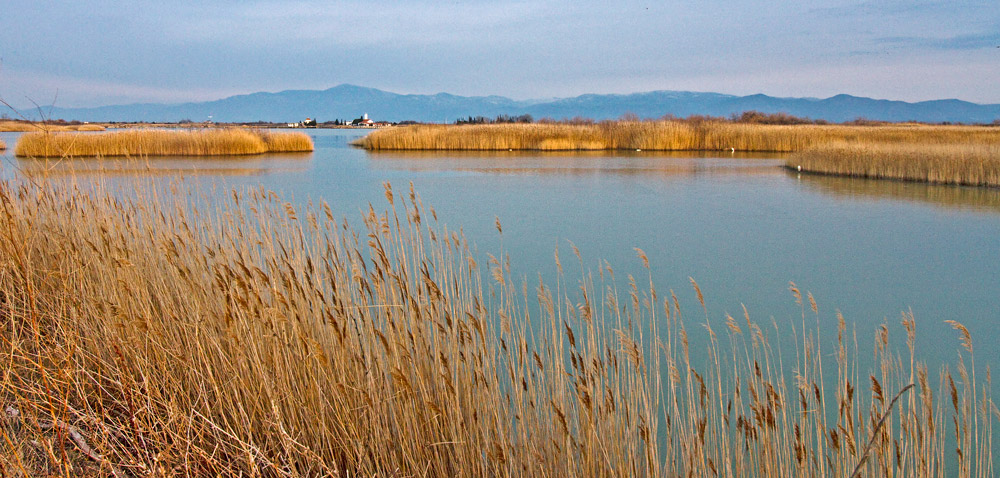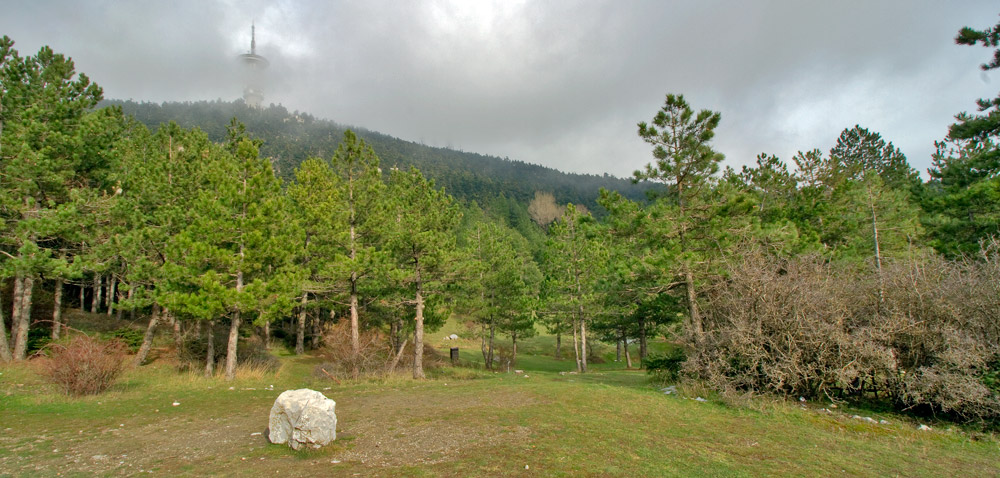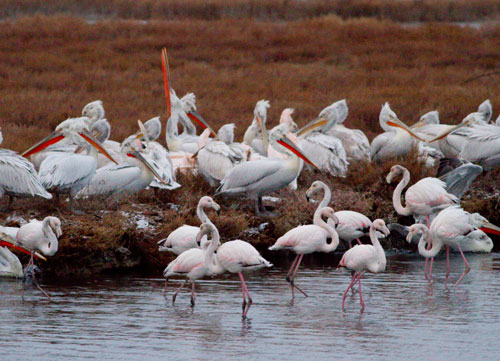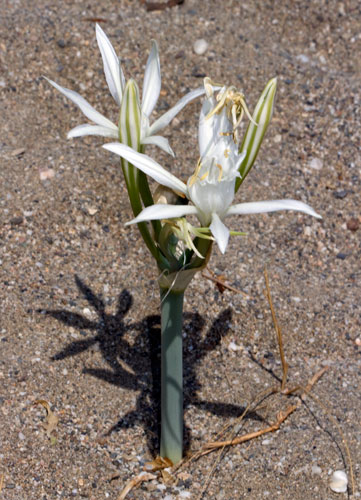National Parks
Nestos Delta and lakes Vistonida-Ismarida

One of the most important wetland complex of the Balkans that spreads on the coast of the Thracian sea and magnetizes thousands of birds every year. The National Park of Nestos Delta and lakes Vistonida-Ismarida was founded in 2008 and is the largest national park of Greece. It covers an area of 230 acres in the south of the prefectures of Kavala, Xanthi and Rodopi. It spreads in a horizontal strip and includes, from West to East, the lagoons of Vassova, Eratinos, Agiasma, Keramoti and Monastiraki, the estuary of Nestos river with the riparian forest of Kotza Orman, the lagoons Erasmios, Maggana, Lafrouda and Lafri, lake Vistonida, lagoons Porto Lagos, Xerolimni, Karatza, Aliki, Ptelea and Elos, lake Ismarida and the estuary of Filiouris river. In the north the park is bordered by the low mountains of Lekani and Achladovouno, the Mangilia hills and Papikio mountain, while in the south it ends at the Thracian sea. Dozens of different habitats cover the area, such as lagoons, large and small lakes, estuaries, swamps, small hills, streams, salt flats, riparian forests, wet meadows, sand dunes, coves with shallow waters, crops, shrubs, reeds, etc. This whole wetland system magnetizes thousands of species of wildlife. The avifauna impresses both in numbers and in the presence of particularly rare species. The ichthyofauna follows with many endemic fresh and brackish fish. The National Park of Nestos Delta and lakes Vistonida-Ismarida seems endless, despite being easily accessible, and there is not one day of the year that does not offer rare experiences for the naturalist.
The dense riparian forests of the area consist of alders, white poplars, black poplars, oriental planes, elms, maples, narrow-leafed ashes, willows, oaks, tamarisks and others. Among these stands out the riparian forest of Kotza Orman, a small remnant of an ancient vast, wild forest. In several places there are small reforestation with rough pine trees. The vegetation of the park consists mainly of hydrophile, ammophile, halophile and aquatic species, such as Cakile maritima subsp. maritima, Salicornia perennans subsp. perennans, Pancratium maritimum, Arthrocnemum macrostachyum, Euphorbia paralias, Euphorbia peplis, Euphorbia seguieriana, Cyperus hamulosus, Halimione portulacoides, Cynodon dactylon, Dittrichia viscosa, Cynanchum acutum, Ammophila arenaria, Salsola kali, Carduus acicularis, Chaerophyllum bulbosum, Juncus acutus subsp. acutus, Juncus maritimus, Glaucium flavum, Ranunculus trichophilus, Scolymus hispanicus, Eryngium maritimum and Typha latifolia. Species such as Nymphea alba, Trapa natans, Lemna minor and Iris pseudacorus are found in freshwaters. In the shallow sea waters near the coastline spread meadows of marine angiosperms of the species Cymodocea nodosa, Ruppia cirrhosa and Zostera noltii.
The area is one of the most important in Greece for avifauna, comprising more than 260 species. The swamps of the park are the only breeding point of the spur-winged plover in Europe. Large flocks of white-fronted goose are wintering in the fields, while lesser white-fronted goose are quite common during winter. Wild colchic pheasants and black woodpeckers live in the riparian forests. White pelicans arrive in winter, together with large flocks of greater flamingos. In the area live many rare species, such as short-eared owls, red-breasted mergansers, pomarine skuas, pygmy cormorants, bitterns, white-headed ducks, tufted ducks, ferruginous ducks, collared pratincoles, oystercatchers, stone-curlews, lapwings and bluethroats. Among the birds of prey here live white-tailed eagles, spotted eagles, hen harriers, marsh harriers, black kites, long-legged buzzards, common buzzards, sparrowhawks, levant sparrowhawks, peregrines, kestrels, hobbies, barn owls and little owls. Common species of the Park are cormorants, purple herons, grey herons, squacco herons, night herons, great egrets, little egrets, spoonbills, glossy ibises, mute swans, common pochards, teals, shovelers, gadwalls, widgeons, mallards, pintails, shelducks, avocets, black-winged stilts, redshanks, whimbrels, kentish plovers, common terns, little gulls, sandwich terns, mediterranean gulls, slender-billed gulls, kingfishers, Cetti’s warblers, penduline tits, starlings, reed buntings and others.
Of the amphibians here are found Schmidtler’s smooth newts, balkan crested newts, green toads, tree frogs, marsh frogs and agile frogs. Herpetofauna includes species such as balkan pond turtles, pond turtles, greek tortoises, Hermann’s tortoises, Kotschy’s geckos, mediterranean house geckos, green lizards, balkan wall lizards, glass lizards, sand boas, blotched snakes, aesculapian snakes, leopard snakes, grass snakes, dice snakes, levant montpellier snakes and nose-horned vipers. From mammals stands out the dense presence of golden jackals and wildcats. Other species are otters, foxes, badgers, hares, hedgehogs, beech martens, weasels, water voles, blind moles and about 10 species of bats.
Almost 21 species of freshwater fish have been recorded here, from which the presence of the endemic thracian shad (Alosa vistonica) stands out. Up to a few decades ago, atlantic sturgeons (Acipenser stellatus) and stellate sturgeons (Acipenser stellatus) lived here, while an emblematic species of the region is the vistonis shemaja (Albournus vistonicus). Other species are the european eel (Anguilla anguilla), the mediterranean toothcarp (Aphanius fasciatus), the thracian barbel (Barbus cyclolepis), the struma spined loach (Cobitis strumicae), the western three-spine stickleback (Gasterosteus gymnourus), the aegean gudgeon (Gobio bulgaricus), the caucasian dwarf goby (Knipowitschia caucasica), the european sun bleak (Leucaspius delineatus), the struma stone loach (Oxynoemacheilus bureschi), the black sea chub (Petroleuciscus borysthenicus), the european bitterling (Rhodeus amarus), the common roach (Rutilus rutilus), the wels catfish (Silurus glanis) and the european tench (Τinca tinca).
Πως θα πάτε
The park is 200 km away from Thessaloniki and 700 km from Athens. It is worth starting your exploration from west to east, from Keramoti to Maronia, following the coastline wherever is accessible. For your accommodation choose the town of Xanthi which is the nearest major town. Beware of the endless dirt roads that may misdirect you.Εμφάνιση στο χάρτη
click to see the place on the map(Latitude: 41.01597694752852, Longitude:25.078265041992175)
Social Networks
Also Read

Prespa lakes
Two beautiful lakes crowned by large mountain ranges that unite three nations, creating what is considered to be one of Europe’s most important habitats.

Parnitha
The long-suffering Parnitha mountain spreads out to the north of Attica, proving that wildlife manages to survive in spite of the criminal mistakes of humans.













